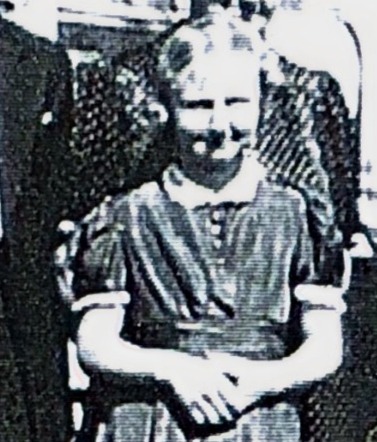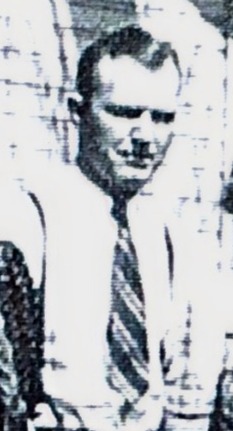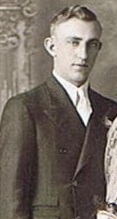Photographs
- Sara L. Dawson

- Jun 30, 2020
- 8 min read
Updated: Mar 12
Photographs hold memories. A photograph documents a special time in the lives of its subjects. A photograph is a reminder of friends and family. And for those who inherit, who may not have lived through that special time, a photograph is a gift of the past.
Recently, I came across a photograph of a family—a mother, father, two daughters, and four of their five sons—with whom I am most familiar. In my lifetime, I met all but the father (my great-grandfather) and one son (my grandfather) pictured below.

What occasion brought this entire family together? When was this picture taken? Most importantly, who was missing? This is a digital copy of the original image, so no identifying marks exist. So, how do we analyze a photograph such as this?
I am fortunate because I know the family and the photograph's location. That said, I was not even a glimmer when this photograph was taken, and no one pictured is alive to enlighten us about its story. We need to analyze the clues left behind to fill in the blanks.
Start with what we can see. Two houses, both of early 1900s construction, one a gable front and the other a bungalow (trust me - you cannot see it, it really is a bungalow). A late 1920s - early 1930s black four-door sedan parked in a driveway. Dressed in their Sunday best, the subject's eyes were downcast, so the sun (nature's flash) was in their eyes. The house must face east, south, or west (it faces south). The trees in the background are bare. There is snow on the ground (see bottom left). This picture was taken in Denver, Colorado, so my first hypothesis is the photo was taken in late fall - winter - early spring (while there has been snow recorded in late spring, summer, and early fall - the trees would have some foliage on them during that time).
While it could have been any Sunday, the photograph most likely commemorated a special occasion—a birthday, perhaps? Or a holiday, maybe Easter? We may never be certain of the exact occasion without further photographic evidence of others in the family, but we can at least attempt to narrow down the year the photograph was taken.
The car could be a clue. A late 1920s - early 1930s sedan would have been registered to the owner. Denver County (incorporated in 1902) records were unavailable when I searched the Colorado State Archives for automobile licenses. (*Note, if your family lived in Mesa County - check the Archives for your ancestor's automobile licenses.) Moving on...
The Houses
Here is where I have the upper hand, as I know both house addresses. We check the deeds with the City and County of Denver Clerk and Recorder's Office, and this is what we find:
The property the two houses sit on was purchased from the landowner, William H. Clark. This was Clark's second subdivision of his property in the former town of Globeville. (*Note: Globeville, platted in 1889 and incorporated in 1891, was annexed into Denver in 1902.) The father of the pictured family and his father (our Polish immigrant), purchased the property on 30 December 1920.

This was not the only property the family purchased from Clark, but that is a story for another time.
The next deed recorded on 28 July 1926 appears to be a straightforward sale of the entire property between two parties: the father/son duo and a husband/wife duo. A simple transfer of land between family members. Only the names of the son/husband are different. This is the only known (to me, at this time) document where the father of this family is listed as two separate individuals with both his given Polish name and his assumed English name. (Boleslaus = Benjamin L.)

If not for the marriage record between the parents of this family, I could have very well ended up looking for another man in this family. The property description remains the same as the first deed, but from the additional pages, I learn that the white gable house was already occupied by the family in question.

The next property transfer occurs in 1948, when the parents sell a portion of the land to their eldest son and his wife.

We know that between 1920 and 1948, two houses were built on this property and that they face south. With access to the City and County of Denver's Assessor's Office, we find the approximate building dates 1921 for the white gable house and 1938 for the bungalow. If it were any other time than now, I would happily drive down to the Denver Central Library and review the microfilm of building permits from 1915 to 1955 to see if there is additional proof of these built-by dates. Alas, for now, we are done exploring the built environment.
The Family
As we are dating a photograph and not exploring this entire family history, we will start with the time frame closest to 1938, when the second house was built, and move forward. To do this, we will go back in time just a bit.
One way to date photographs is to focus on children and estimate their age. It is easier to guess the ages of a child vs an adult (case in point, people often think that I am 10-15 years younger than I really am). As only one child in this family was still a young child, we will focus on the youngest daughter. According to her birth certificate, she was born in Denver in June 1932. In the summer of 1938, she would have been approximately 6 years of age. Comparing this photograph with others available, we can attempt to pinpoint a closer age and, therefore year our photograph was taken.
Marcella
The picture on the right was taken when she received her First Holy Communion. Typically, Catholic children receive this sacrament in the second grade or when they are about 8 years old (in her case, 1940). She looks just a bit older in the family photograph, perhaps 10 or 11 years old. Now, it is time to check some additional records.
The 1940 US Federal Census shows that the eldest daughter, her husband, and their two sons born in 1936 and 1938 lived several doors up from the family church, St. Joseph's Polish Church (built in 1902), or a 15-minute walk (if you took the roads over the railroad tracks - less for sure if you did not) from the white gable house.
Next, the eldest son, his wife, and their young son, born in 1938, lived in the bungalow next door to his parents.
Lastly, the rest of the family lived in the big white gable house. The second son was married, and his wife and their daughter, born in May 1939, were also in residence. The family's patriarch was a carpenter, and four sons worked at the local meatpacking house. Where is the fifth son? Why was the youngest son not working in 1940? Because he was only 11 years old in April 1940. 😮 Now, we need to revisit this photograph and our calculations.
Could the girl in the photograph be older than 10-11? If her closest brother were only 4 years older than her, he would be 14-15.

Could this man still have been a boy in this photograph? The tie might give us an additional clue. Most boys stop growing at age 16, so it is possible this photograph was taken between 1942 and 1943. Why stop in 1943, you ask?
The Last Piece of the Puzzle
Putting the family in the context of what was happening in the world in the early 1940s is our last step. On December 7, 1941, Japanese attacks on the naval fleet at Pearl Harbor began. A family with a father and five sons would have been preparing to send one or more off to war.
The father registered in April 1942 in the "Fourth Registration," often called the "Old Man's Draft." He was 53 years old and an unemployed carpenter, 5 foot 7 inches, with brown hair and blue eyes. An obvious physical characteristic that he could be identified by - he was missing part of his little finger on his left hand. He would not go off to war.

The eldest son registered in the first draft on 16 October 1940. He was 26, 6 feet tall, with blonde hair and hazel eyes. His registration was reissued in March 1942. At that time, his family still numbered three but would increase to four in September 1943. He married in 1936 at 22 (pictured to the right); in 1942/1943, he would have been 28/29 years old.
Benjamin Jr.
The second son registered in October 1940. By this time, he had moved his family out of the white gable house and into their own home, a short 3-minute walk from the rest of the family. He was 23 years old and 6 1/2 feet tall, with brown hair and grey eyes, and he was left-handed. Like his older brother, he worked at the meatpacking plant and would not go off to war.
The third son registered sometime after March 1941 (the card was not dated but he listed his age as 21 and his birth in March 1920). He gave his mother as his family member, who always knew his address. Keeping with the theme, he was also 6 feet tall and had blonde hair and blue eyes. He was also the only son to have attended high school by this time. He enlisted in the U.S. Marines on 9 March 1942. He married in Denver on 30 October 1943 (pictured to the right). He would serve until 8 March 1945.
Lawrence
The fourth son, registered in February 1942, was only 20 years old (almost 21), 5 foot 11 inches, with blonde hair and blue eyes. He also gave his mother as his closest relative. He enlisted in the U.S. Army on 18 August 1942 and served until 27 December 1945.
The youngest son did not register until he was eligible in November 1946, three days after his 18th birthday. He was 6 foot 2 inches tall, with blonde hair and blue eyes. By this time, he was working at the meatpacking plant, like his older brothers.
One last clue: the youngest daughter was at her brother's wedding in October 1943. We have yet one more photograph to analyze.
We know the photo on the right was taken in approximately 1940, and the one on the left was taken in 1943. While we can see in the wedding photo the youngest daughter appears to be older, this can be explained by her perfectly coiffed hair, more grown-up attire, and possibly a slight heel on her dress shoes. In the family photograph, she is standing by her brother and reaches about his shoulder in height. She appears to be at a similar height in the wedding photograph. Girls, similarly to boys, stop growing in height at about 14-15 years old. In 1943, she would have been 11 years old.

As I have not been able to locate photos from two of the brothers, we do not have a definitive answer about our family photograph, but we have narrowed down our missing brother to the second or fourth brother. My theory is the fourth brother is missing as he was most likely in boot camp at the time of his brother's wedding, which is within the time frame of this photograph. I must further research both brother's service records to substantiate my claim. Additional photographs from the same time could also assist in dating the photograph. In the fall of 1943, there were eight grandchildren (the little boy in the wedding photograph was my uncle 🧡). I will be on the lookout for more 📸 from this time. And the 🔍 goes on.
The photograph of the family and the youngest daughter are printed with permission from her grandson, Shaun Nelson. The wedding photographs, deeds, and marriage records from the author's collection.
Updated March 2025.





















Thank you!